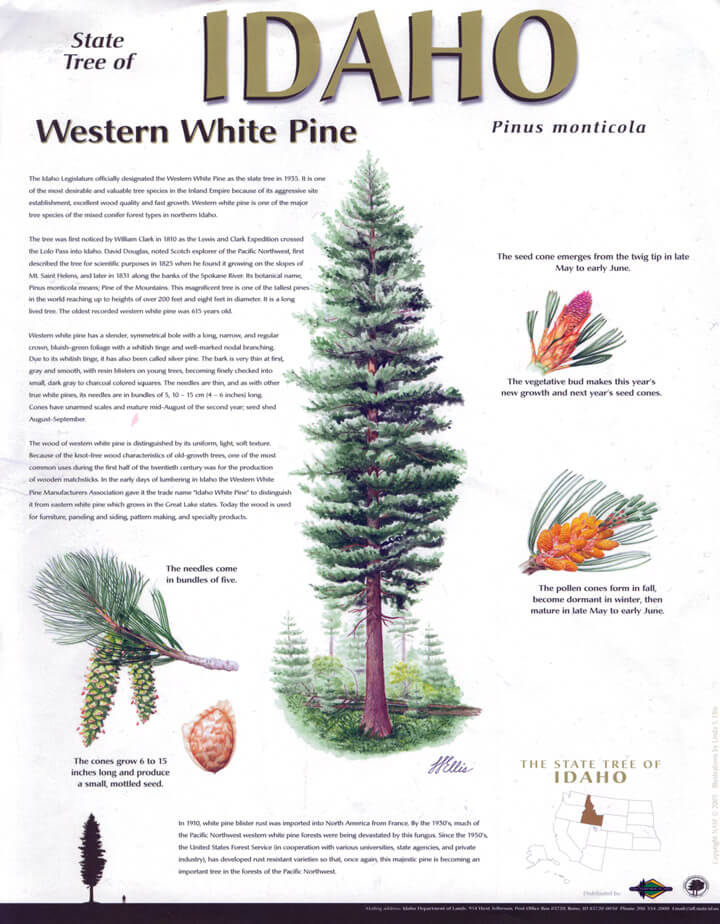
The U.S. Forest Service is trying to bring back Idaho’s state tree to its former prominence.
Western white pine were wiped out in the early to mid-1900s by a fungus that arrived from Europe in 1910. The blister rust fungus was widespread in the 1940s. By the late 1960s, forest managers moved to salvage as many harvestable trees as possible.
Richard T. Bingham, a scientist with the U.S. Department of Agriculture, in the 1950s began looking for white pine trees that appeared unaffected by the fungus. He collected seeds and pollen from those trees to breed rust-resistant ones. That effort is continuing at the Forest Service’s Coeur d’Alene Nursery.
Forest Service geneticist Mary Frances Mahalovich said the nursery can produce trees that are about 66% resistant to blister rust. Mahalovich said the goal isn’t to reach complete resistance because a new strain of blister rust could wipe out all their work so far. Instead, she said the goal is to have blister rust behave more like a native disease that kills some trees but not large stands.
The nursery this year is growing about 350,000 white pine seedlings resistant to blister rust. About 1,500 to 3,000 acres (600 to 1,200 hectares) in the Idaho Panhandle National Forest are planted with seedlings every year, with from 20% to 60% being white pines. (AP)

